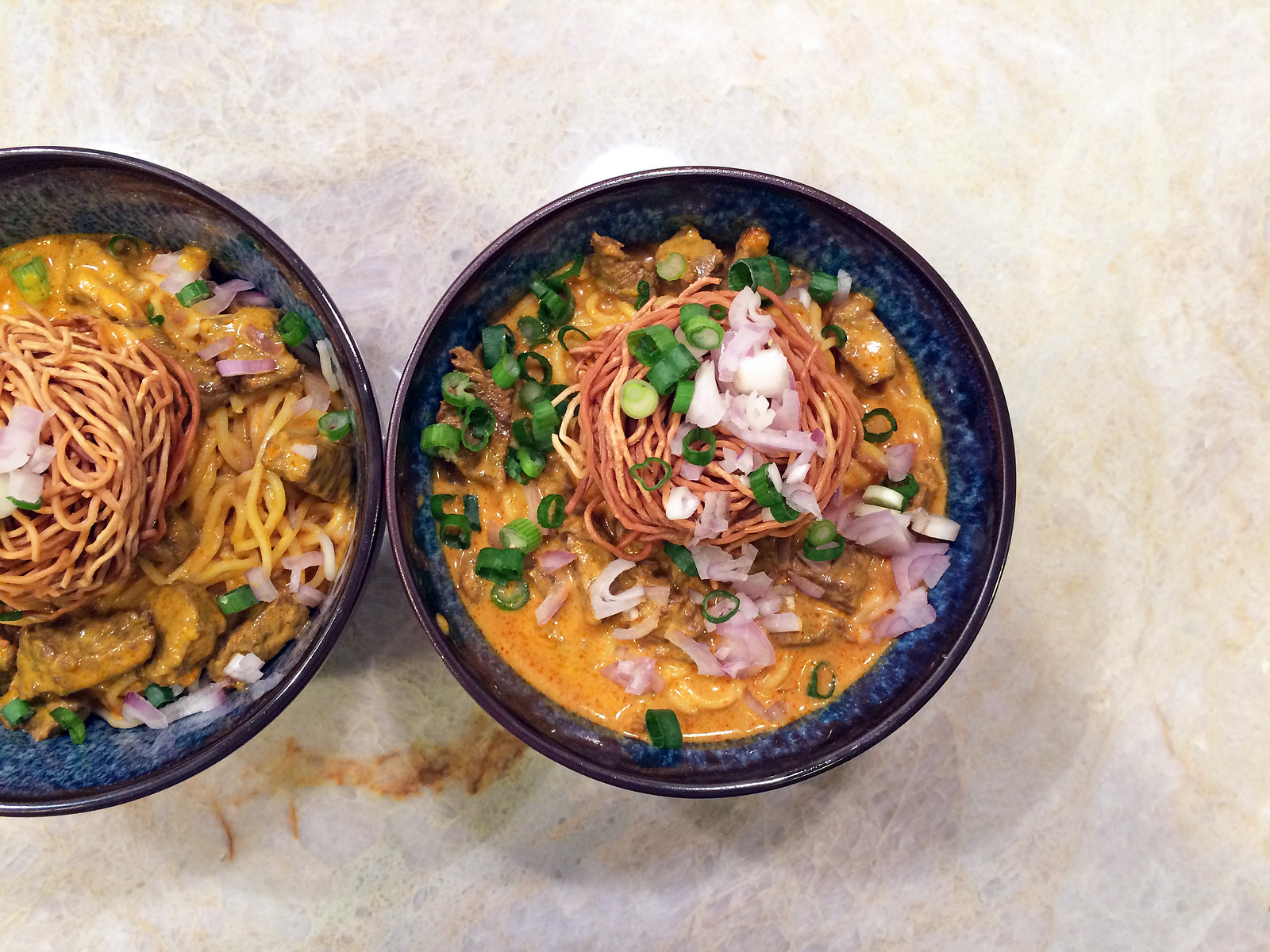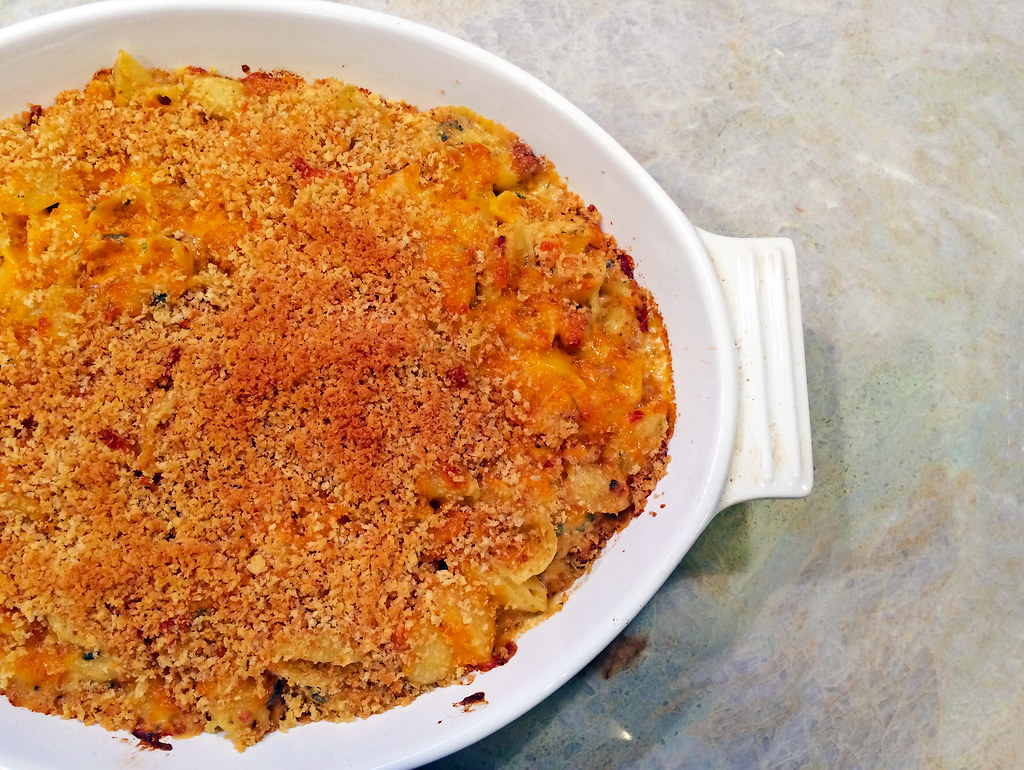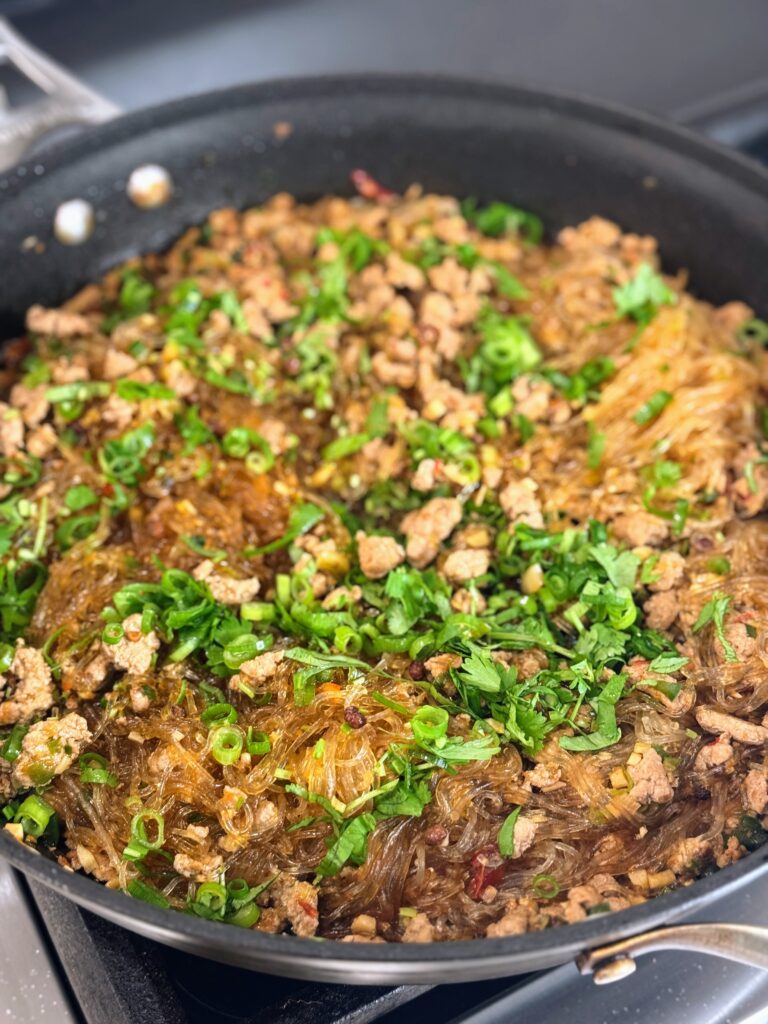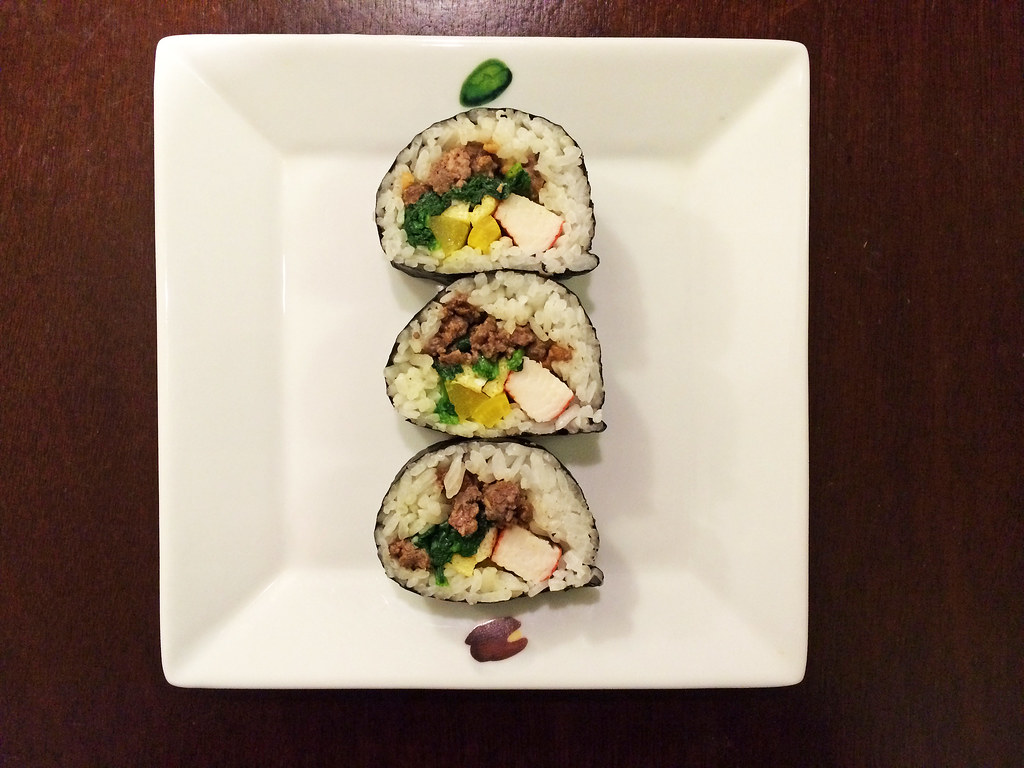Chiang Mai has two seasons: smoky and not smoky. Each spring, farmers create manmade fires to get rid of material from old rice stalks to clear the way for the next season’s planting. The air becomes polluted in addition to the stiflingly hot weather. It’s not the most popular time of year to visit Chiang Mai.
But I am undeterred. When I visited Thailand last year, I had to include Chiang Mai in my travels. Why? I wanted to eat khao soi. Khao soi is a soupy, curry-laden bowl of Burmese-influenced goodness, a mix of deep-fried crispy egg noodles and boiled egg noodles, shallots, lime, ground chilis, coconut milk, and usually meat. I researched the best khao soi restaurant in Chiang Mai and Nishan and I trekked through the smoggy heat until we found it: a nondescript outdoor restaurant with a corrugated sheet metal roof and plastic stools, identifiable only by the huge crowd of happy eaters.
The khao soi was worth the walk and when I’ve since learned to recreate these curry noodles at home, adapting my version from Jeffrey Alford and Naomi Duguid’s Hot, Sour, Salty, Sweet. If you want to make this dish a bit healthier and easier to cook, omit the fried noodles. The red curry paste is a shortcut to making your own curry paste by hand, but the results are still delicious.
Ingredients:
2 to 3 cloves garlic, minced
1 teaspoon ground turmeric
1 teaspoon salt
2 tablespoons Thai red curry paste
1 tablespoon cooking oil plus more for deep-frying noodles
3 cups canned coconut milk, with 1/2 cup of the thickest milk set aside
1/2 pound sirloin beef, cut into thin slices
1 tablespoon sugar
1 cup water
3 tablespoons fish sauce
1 tablespoon lime juice
1 pound Chinese egg noodles
3 green onions, thinly sliced
2 shallots, chopped
1. In a small bowl, mix the garlic, turmeric, and a pinch salt until well blended. Stir in the curry paste and set aside.
2. Place a large heavy pot over high heat. Add the one tablespoon oil and when it is hot, add the curry paste mixture. Stir-fry for one minute, then add the reserved 1/2 cup thick coconut milk and lower the heat to medium-high. Add the meat and sugar and cook, stirring frequently, for 4 to 5 minutes, until the meat has slightly browned. Add the remaining coconut milk, the water, fish sauce, and the remaining 1 teaspoon salt and bring to a boil, then reduce the heat to medium and cook at a simmer for about 10 minutes. Remove from the heat and stir in the lime juice. The soup can be prepared ahead of time and reheated just before serving.
3. Make the optional crispy noodles: line a plate with paper towels. Place a large wok over high heat and add about 1 cup oil, or 1/2 inch oil. When the oil is hot, drop in a strand of uncooked noodles to test the temperature. It should sizzle slightly as it falls to the bottom, then immediately puff and rise to the surface; adjust the heat slightly, if necessary. Toss a handful (about 1 cup) of noodles into the oil and watch as they crisp and puff up. Use a spatula or long tongs to turn them over and expose all of them to the hot oil. They will crisp up quickly, in less than 1 minute. Lift the crisped noodles out of the oil and place on the paper towel-lined plate. Give the oil a moment to come back to temperature, and then repeat with a second handful of noodles.
4. Bring a large pot of water to a boil over high heat. Add the remaining noodles, bring back to a boil, and cook until tender but not mushy, about 6 minutes. Drain well and rinse in fresh water to get rid of extra starch and stop the cooking process.
5. Divide the cooked noodles among four bowls. Ladle over the broth and meat. Top with crispy noodles and a pinch each of shallots and scallions.





